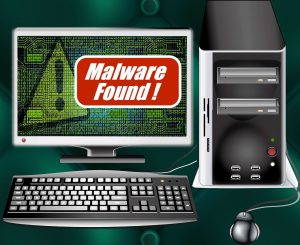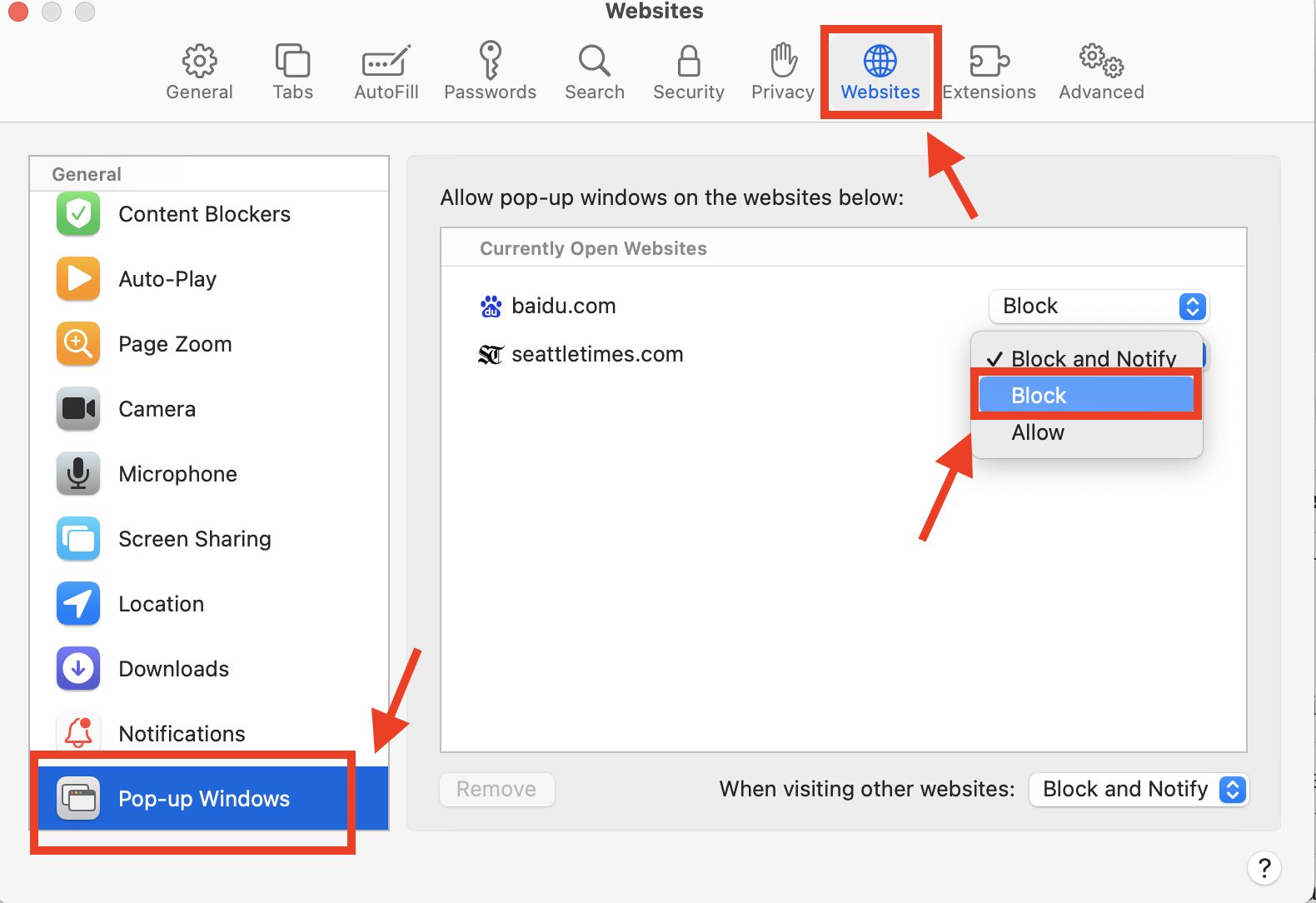Introduction
Welcome to our guide on how to download a virus. In this article, we will explore the world of computer viruses, the risks and consequences associated with them, as well as the legal and ethical considerations one should be aware of. While the title may sound intriguing, it is important to note that downloading a virus is a serious matter and should not be done without proper understanding and precautions.
Computer viruses are malicious software programs designed to infiltrate and damage computer systems. They can range from simple annoyances to highly sophisticated attacks that can compromise sensitive information, disrupt operations, and cause financial loss. Understanding how viruses work is crucial in order to protect oneself and mitigate the risks involved.
It is important to emphasize that downloading a virus for malicious purposes or harming others is both illegal and unethical. This guide is purely for educational purposes and does not endorse or encourage any illegal activities. It aims to educate users on the potential dangers of viruses and how to prevent them from infecting their systems.
By exploring the process of downloading a virus, we hope to provide valuable insights into the world of cybersecurity and equip readers with the knowledge to identify potential risks. It is important to note that protecting your computer from viruses should always be a top priority, and regular maintenance, such as keeping your operating system and antivirus software updated, is essential.
Throughout this guide, we will discuss the steps involved in downloading a virus in a controlled environment and highlight the precautions to be taken. It is essential to understand the potential dangers and implications before proceeding with any actions related to viruses.
Now that we have clarified the purpose and intentions of this guide, let’s delve into the fascinating yet dangerous realm of computer viruses and explore the risks and consequences that come with them.
Understanding Viruses
In order to effectively download a virus, it is crucial to have a solid understanding of what a virus is and how it operates. A computer virus is a type of malicious software that replicates itself and spreads to other computers or systems. Its primary purpose is to infect and cause harm to the targeted system or steal sensitive information.
Viruses can be categorized into different types based on their characteristics and behaviors. Some common types include:
- File Infector: This type of virus infects executable files, such as .exe or .com files, and spreads when the infected file is executed.
- Boot Sector Virus: These viruses infect the boot sector of a computer’s hard drive or diskette, making it difficult to remove them.
- Macro Virus: Macro viruses attach themselves to documents, spreadsheets, or other files that support macros, and are primarily found in software applications like Microsoft Office.
- Worms: Worms are standalone programs that replicate themselves and spread across a network or through email attachments, exploiting security vulnerabilities.
Once a virus infects a system, it can perform a range of malicious activities. These can include:
- Deleting or corrupting files and data on the infected system.
- Disrupting the normal functioning of the computer or network.
- Stealing personal or financial information, such as passwords or credit card details.
- Installing additional malware or spyware on the system.
- Using the infected system to launch attacks on other computers or networks.
Viruses can be distributed through various means, such as infected email attachments, malicious websites, or compromised software downloads. It is important to exercise caution while browsing the internet, opening email attachments, and downloading files from unknown sources.
Protecting your computer from viruses involves implementing strong security measures, such as using up-to-date antivirus software, regularly scanning your system for malware, and keeping your operating system and software applications updated with the latest security patches.
Now that we have gained a basic understanding of viruses and their behaviors, let’s explore the risks and consequences associated with downloading and spreading these malicious programs.
Risks and Consequences
Downloading a virus comes with a myriad of risks and consequences that can have a significant impact on both individuals and organizations. It is crucial to be aware of these risks before engaging in any activity involving viruses.
One of the primary risks of downloading a virus is the potential compromise of personal and sensitive information. Viruses can be designed to steal passwords, credit card details, and other confidential data. This information can then be used for identity theft, financial fraud, or other malicious purposes, leading to devastating consequences for the victims.
Moreover, viruses can cause significant damage to computer systems and networks. They can corrupt or delete crucial files, leading to data loss and operational disruptions. This can result in financial loss for businesses and inconvenience for individuals who rely on their computers for work, studies, or personal use.
In addition to the immediate consequences, downloading and spreading viruses can also have legal implications. It is essential to understand that intentionally infecting someone’s computer or network with a virus is illegal in many jurisdictions. Engaging in such activities can result in criminal charges, fines, and even imprisonment.
Beyond the legal aspect, there are also ethical considerations to be mindful of. Purposefully causing harm through the distribution of viruses is highly unethical and goes against the principles of responsible and respectful use of technology. It is important to always prioritize the well-being and safety of others when engaged in any online activities.
Furthermore, the reputational damage caused by being associated with virus distribution can be long-lasting and difficult to repair. Once identified as someone who downloads or spreads viruses, trust can be lost, both personally and professionally. It is crucial to recognize the impact of one’s actions and make responsible choices when it comes to cybersecurity.
Understanding the risks and consequences associated with downloading viruses highlights the importance of taking proactive measures to protect ourselves and our systems. By maintaining strong security practices, such as using reliable antivirus software, regularly updating software, and being cautious of suspicious downloads or attachments, we can minimize the likelihood of falling victim to viruses.
In the next section, we will explore the legal implications that come with the act of downloading viruses, and discuss the potential consequences one might face for engaging in such activities.
Legal Implications
Downloading a virus and engaging in malicious activities can have serious legal consequences. It is important to understand the legal framework surrounding computer viruses and the potential repercussions involved.
In many jurisdictions, intentionally infecting someone’s computer with a virus is considered a criminal offense. This can fall under various laws, such as computer fraud, unauthorized access, or malicious software distribution. The severity of these offenses varies depending on the jurisdiction and the specific actions taken.
Penalties for downloading and spreading viruses can range from fines to imprisonment, depending on the extent of the damage caused and the intent behind the action. Individuals found guilty of these crimes may also face civil lawsuits, where they can be held liable for any damages caused to the victim’s computer, data, or reputation.
Furthermore, laws regarding computer crimes and cyber-related offenses are constantly evolving, aiming to keep up with the advancements in technology. It is essential to stay informed about the legal framework in your jurisdiction to ensure compliance and avoid potential legal consequences.
In addition to the criminal and civil liabilities, engaging in malicious activities involving viruses can also have long-term implications for personal and professional reputation. Being associated with cybercrimes can tarnish one’s image and trustworthiness, impacting future job prospects, educational opportunities, and relationships.
It is crucial to remember that ignorance of the law is not a valid defense. Whether knowingly or unknowingly, engaging in activities that involve downloading viruses or spreading malware can have severe legal implications. Therefore, it is essential to respect the law and act responsibly in the use of technology.
Now that we have examined the legal perspective surrounding downloading viruses, let’s delve into the ethical considerations and the importance of responsible digital behavior.
Ethical Considerations
When it comes to downloading viruses, ethical considerations play a significant role in guiding our actions and behaviors. It is essential to reflect on the ethical implications of engaging in activities that involve intentionally infecting computers or spreading malware.
One of the fundamental ethical principles to consider is the principle of doing no harm. Purposefully causing harm to others by distributing viruses goes against this principle. Viruses can result in financial loss, personal distress, and even compromise the safety and security of individuals and organizations. It is our responsibility to prioritize the well-being and safety of others in our online activities.
Respecting the privacy and autonomy of others is another important ethical consideration. Infecting someone’s computer without their consent is a violation of their privacy rights and undermines their control over their own personal information. Respecting the autonomy of others means refraining from engaging in activities that can compromise their digital security and infringe upon their rights.
Moreover, downloading and distributing viruses can contribute to a negative and harmful digital environment. By spreading malware, individuals actively contribute to the erosion of trust, the disruption of systems, and the proliferation of cybercrime. It is crucial to foster a positive digital ecosystem by engaging in responsible and ethical behavior that supports a safe and secure online space for all users.
Being ethically aware also means considering the long-term consequences of our actions. While downloading a virus may seem like a thrill or a challenge in the moment, it is important to understand the potential harm it can cause to individuals and society as a whole. Ethical decision-making requires a broader perspective that considers the impact on others and the well-being of the community.
Furthermore, acting ethically in the digital realm contributes to the overall trust and integrity of the internet. By upholding ethical standards, we promote a culture of responsible behavior and contribute to a safer and more trustworthy online environment for everyone to benefit from.
By understanding the ethical considerations surrounding the download of viruses, we can make informed decisions and choose to engage in responsible and respectful behavior. In the next section, we will discuss the steps involved in downloading a virus, emphasizing the importance of conducting these activities in a controlled and safe environment.
Steps to Download a Virus
Disclaimer: The following steps are meant for educational purposes only. It is crucial to reiterate that downloading a virus with the intent to harm or compromise others is illegal and unethical. This guide aims to provide insights into the process for educational awareness.
While it is strongly advised against downloading viruses due to the potential risks and consequences, understanding the steps involved can help shed light on how these malicious programs operate. Here is a general outline of the steps typically involved in downloading a virus:
- Choosing a Safe Environment: It is essential to conduct any activities related to viruses in a controlled and isolated virtual environment. This can be done by setting up a virtual machine or using specialized software that creates a safe sandbox for testing purposes.
- Research and Information Gathering: Gather reliable and ethical sources of information to understand the different types of viruses and their behaviors. Study how viruses are commonly distributed and their potential impact on systems.
- Selecting the Right Virus: Decide on the type of virus you want to download for educational purposes. Be cautious not to select a virus that is too destructive or harmful, as it could have unintended consequences.
- Downloading the Virus: Find a reputable source for downloading the selected virus. Use trusted forums, research papers, or educational resources that provide access to viruses for research and analysis purposes only.
- Executing the Virus: Follow the established safety precautions and guidelines for executing the virus within the controlled environment. Take note of any behavior changes or system responses to understand the virus’s impact.
- Ensuring Proper Containment: After studying the virus and its behavior, ensure that it is properly contained within the controlled environment. Remove the virus from the virtual machine or isolate it in a secure location to prevent unintentional spread.
It is important to reiterate that these steps should only be performed in a safe and controlled environment for educational purposes. Engaging in any activities involving viruses outside of this context can result in serious legal and ethical consequences.
Remember, the primary goal of this guide is to raise awareness about the potential risks and consequences associated with viruses. By understanding how they operate, you can better protect yourself and others from falling victim to these malicious programs.
In the next section, we will provide insights on how to choose a safe environment for conducting activities related to studying viruses.
Choosing a Safe Environment
When conducting activities related to studying or analyzing viruses, it is crucial to select a safe environment that minimizes the risks of unintentional harm or unauthorized spread. Creating a controlled and isolated virtual environment is essential to ensure the safety and security of both the user and other systems. Here are some key considerations when choosing a safe environment:
1. Virtual Machine: Setting up a virtual machine is an effective way to create an isolated environment for virus-related activities. Virtualization software, such as VMWare or VirtualBox, allows you to run a separate operating system within your existing system, providing a safe space to execute and study viruses. This way, any potential damage caused by the virus stays contained within the virtual environment.
2. Sandboxing: Another option is to use specialized software that provides sandboxing capabilities. Sandboxing allows for the execution of potentially harmful files within a controlled environment, isolating them from the rest of the system. There are various sandboxing tools available that allow you to simulate a secure environment for studying viruses without putting the rest of your system at risk.
3. Network Isolation: It is important to ensure that the virtual environment or sandbox is disconnected from your main network to prevent accidental transmission of any virus. By isolating the environment from other devices and networks, you minimize the risk of infecting other systems or causing disruptions outside of the controlled environment.
4. Use Reliable Software: When setting up a virtual machine or employing sandboxing, it is crucial to use reputable and reliable software. Choose well-established platforms that have a strong track record of security and stability. Regularly update the software to ensure you have the latest security patches and protections against potential vulnerabilities.
5. Backup and Restore: Before conducting any activities involving viruses, it is advisable to create a backup of your main system or virtual machine. This way, in the event of an unexpected issue or infection, you can restore your system to a previous state without losing important data or settings.
6. Educate Yourself: It is crucial to possess a solid understanding of the risks and precautions associated with activities involving viruses. Stay informed about the latest security practices, study the behavior of viruses, and continually update your knowledge to ensure you are well-prepared to handle any potential risks.
By diligently considering these factors and implementing the necessary precautions, you can create a safe environment for studying and analyzing viruses without compromising the security and integrity of your main system or network.
In the next section, we will delve into the importance of research and information gathering when engaging in activities related to viruses.
Research and Information Gathering
Before proceeding with any activities related to viruses, it is crucial to invest time in thorough research and information gathering. Educating yourself about viruses, their behaviors, and the potential risks involved is essential for a responsible approach. Here are some key aspects to consider when conducting research and gathering information:
1. Reliable Sources: Ensure that you rely on reputable and trustworthy sources for gathering information about viruses. Look for reliable websites, academic papers, and cybersecurity forums that deliver accurate and up-to-date information. Avoid sources that may promote or encourage illegal activities related to viruses.
2. Understand Virus Types: Gain a comprehensive understanding of the different types of viruses and their characteristics. Familiarize yourself with common virus classifications, such as file infectors, boot sector viruses, macro viruses, and worms. This knowledge will allow you to identify the distinct behaviors and potential impacts of each type.
3. Study Virus Distribution Methods: Explore how viruses are commonly distributed and transmitted. Understand the various attack vectors used by cybercriminals, such as email attachments, malicious downloads, infected websites, or social engineering techniques. This knowledge will help you identify potential risks and protect yourself against virus transmission.
4. Analyze Virus Behavior: Study the behavior of different viruses, including how they infect systems, propagate, and execute malicious actions. Understanding their behavior will provide insights into the potential risks and consequences associated with each virus type.
5. Identify Impact on Systems: Explore the potential impacts that viruses can have on computer systems and networks. Learn about the various methods viruses employ to corrupt or delete data, disrupt operations, or steal sensitive information. Understanding the potential consequences will highlight the importance of prevention and protection.
6. Stay Updated: The field of cybersecurity is constantly evolving, with new viruses and attack techniques emerging regularly. Stay informed about the latest trends, vulnerabilities, and security measures through reputable sources. Regularly update your knowledge to ensure you are equipped to handle the ever-changing landscape of virus threats.
By investing time in research and information gathering, you strengthen your understanding of viruses, their behaviors, and the potential risks associated with them. This knowledge allows you to adopt a proactive and preventative approach, protecting yourself and others from falling victim to these malicious programs.
In the next section, we will discuss the importance of selecting the right virus for educational purposes and the precautions that should be taken.
Selecting the Right Virus
When engaging in activities related to studying viruses, it is crucial to select the right virus for educational purposes. This involves considering various factors to ensure a safe and responsible approach. Here are some key considerations when selecting a virus:
1. Educational Purpose: The primary goal of selecting a virus should be educational awareness. Choose a virus that allows you to study its behavior, propagation methods, and potential impacts on systems. It should provide insights into the workings of viruses without causing significant harm or damage.
2. Controlled Environment: Conduct all activities involving the selected virus in a controlled and isolated environment, such as a virtual machine or sandbox. This ensures that any potential damage caused by the virus remains contained and does not infect other systems or networks.
3. Virus Classification: Consider different classifications of viruses and their specific characteristics. Opt for a virus type that aligns with your educational objectives, such as file infectors, boot sector viruses, macro viruses, or worms. Choose a virus that allows for a comprehensive examination of its behavior and effects.
4. Reputable Sources: Obtain the selected virus from reliable and ethical sources. Look for research papers, educational platforms, or cybersecurity forums that provide access to viruses for educational purposes. Avoid sources that promote or encourage illegal activities or harm to others.
5. Potential Impact: Evaluate the potential impact of the selected virus on systems. Strive to choose a virus that is not overly destructive or harmful, as you do not want to inadvertently cause severe damage or data loss. The virus should allow for the study of its effects without posing significant risks.
6. Legal Compliance: Ensure that selecting and studying the chosen virus complies with the local laws and regulations. Engaging in activities that involve legal or ethical violations can have serious consequences. It is essential to act responsibly and within the boundaries of the law.
By carefully considering these factors, you can select a virus that aligns with your educational goals while maintaining a responsible and ethical approach. Remember, the objective is to learn about viruses, their behaviors, and potential risks without causing harm to systems or compromising the security and privacy of others.
In the next section, we will discuss the process of downloading and executing the selected virus, emphasizing the importance of caution and containment measures.
Downloading and Executing the Virus
When downloading and executing a virus for educational purposes, it is crucial to exercise caution and follow proper containment measures. While this guide emphasizes responsible behavior, it is important to reiterate that these actions should only be carried out in a controlled and isolated environment. Here are the steps to download and execute the selected virus:
1. Isolated Environment: Ensure that you are operating within a virtual machine or sandboxed environment specifically created for this purpose. This provides a controlled space where any potential damage caused by the virus is contained and does not affect your main system or network.
2. Secure Download Source: Obtain the selected virus from a reliable and trusted source. Choose reputable platforms that are known for providing access to viruses for educational purposes only. Exercise caution and avoid downloading viruses from unverified or questionable sources that may introduce additional risks.
3. Verify Integrity: Before executing the virus, perform a thorough scan using updated and reliable antivirus software. This ensures that the downloaded file does not contain any additional malware or security threats. Proceed only if the scan confirms the integrity of the file.
4. Execute in Isolation: Execute the virus within the secure and isolated environment. Follow guidelines specific to the virtual machine or sandbox software to ensure proper execution. Observe the behavior of the virus, take notes, and monitor any changes or impacts it has on the system.
5. Document Observations: Record detailed observations about the behavior and effects of the virus during its execution. Take note of any abnormalities, system responses, or unexpected behaviors exhibited by the virus. Documentation will aid in analysis and understanding while minimizing the risk of unintended spread.
6. Contain and Remove the Virus: After completing the study and analysis of the virus, ensure proper containment and removal. Either delete the virus from the virtual machine or isolate it in a secure location to prevent any accidental transmission or spread of the virus beyond the controlled environment.
7. Update Security Software: Once the virus is contained, ensure that you update and run a full scan on your antivirus software to eliminate any potential remnants. This step ensures the safety and integrity of your system or network after conducting virus-related activities.
By following these steps and maintaining a strict adherence to safety precautions, you can study and analyze the selected virus while keeping your systems and networks protected. Always prioritize the security and well-being of yourself and others, and act responsibly within the educational context.
In the next section, we will discuss the importance of ensuring proper containment to prevent accidental spread or harm.
Ensuring Proper Containment
Proper containment is a critical aspect of engaging in activities related to viruses. It helps prevent accidental spread or harm to systems beyond the controlled environment. When working with viruses for educational purposes, follow these guidelines to ensure proper containment:
1. Isolated Environment: Conduct all virus-related activities within a secure and isolated environment, such as a virtual machine or sandbox. This separation ensures that any potential damage caused by the virus remains contained within the controlled environment and does not impact your main system or network.
2. Network Segmentation: If working within a networked environment, ensure proper network segmentation. Isolate the controlled environment from other devices and networks to prevent accidental transmission of the virus. This protects other systems and minimizes the risk of unintended spread.
3. Disable Network Connections: If not required for the specific analysis, disable network connectivity within the controlled environment. This precautionary measure ensures that the virus cannot establish any unauthorized connections or communication with external systems, reducing the potential risk of infecting other devices.
4. Access Control: Limit access to the controlled environment. Ensure that only authorized individuals who understand the risks and precautions are granted access. Educate users about the importance of responsible behavior and the potential consequences of mishandling viruses.
5. File Containment: Contain the virus itself within the controlled environment and refrain from transferring or sharing it outside of the secure environment. This prevents accidental spread and ensures that the virus remains isolated and unable to infect other systems.
6. Documentation and Quarantine: Maintain detailed documentation of all virus-related activities and observations. This documentation aids in analysis and understanding while also ensuring that the virus remains in quarantine within the controlled environment. Securely store the documentation to minimize the risk of unauthorized access or unintended spread.
7. Contingency Plans: Establish contingency plans to address any unintended consequences or infections that may occur despite taking precautions. Prepare methods for quickly isolating and containing any potential breaches or accidental spread to minimize the impact and prevent further harm.
Remember, the purpose of these activities is purely educational, and the safety and security of systems and networks should always be prioritized. By ensuring proper containment, you can safely conduct virus-related studies while mitigating risks and protecting yourself and others from unintentional harm.
In the next section, we will conclude our discussion, summarizing the key points covered throughout the article.
Conclusion
The process of downloading a virus for educational purposes raises important considerations regarding the risks, consequences, legal implications, and ethical responsibilities. This guide aimed to provide insights into the world of computer viruses while emphasizing the importance of responsible behavior and a safe approach.
Understanding viruses and their behaviors is crucial for protecting ourselves and our systems from potential harm. It is important to stay informed about the various types of viruses, their distribution methods, and the potential impacts they can have on computer systems and networks.
Engaging in activities related to viruses should only be done within a controlled and isolated environment, such as a virtual machine or sandbox. This ensures that any potential damage caused by the virus remains contained and does not impact the main system or network.
Throughout the process, it is essential to prioritize the security and privacy of ourselves and others. Following legal guidelines and ethical considerations helps maintain a safe and responsible digital environment.
It is important to note that the purpose of this guide is solely educational. The intention is to raise awareness, promote understanding, and encourage responsible behavior when it comes to dealing with viruses.
This guide strongly emphasizes that engaging in malicious activities, intentionally harming others, or spreading viruses is both illegal and unethical. It is crucial to abide by the law, act responsibly, and protect the safety and security of ourselves and others in all online activities.
By cultivating a comprehensive understanding of viruses, their risks, and the necessary precautions, we can bolster our cybersecurity defenses and contribute to a safer and more secure digital ecosystem.
Remember, the best defense against viruses is prevention. Regularly update your software, implement strong security measures, and exercise caution when browsing the internet, opening email attachments, or downloading files from unknown sources.
It is our collective responsibility to foster a safe digital environment by promoting responsible behavior, respecting the law, and prioritizing the well-being of ourselves and others.

























